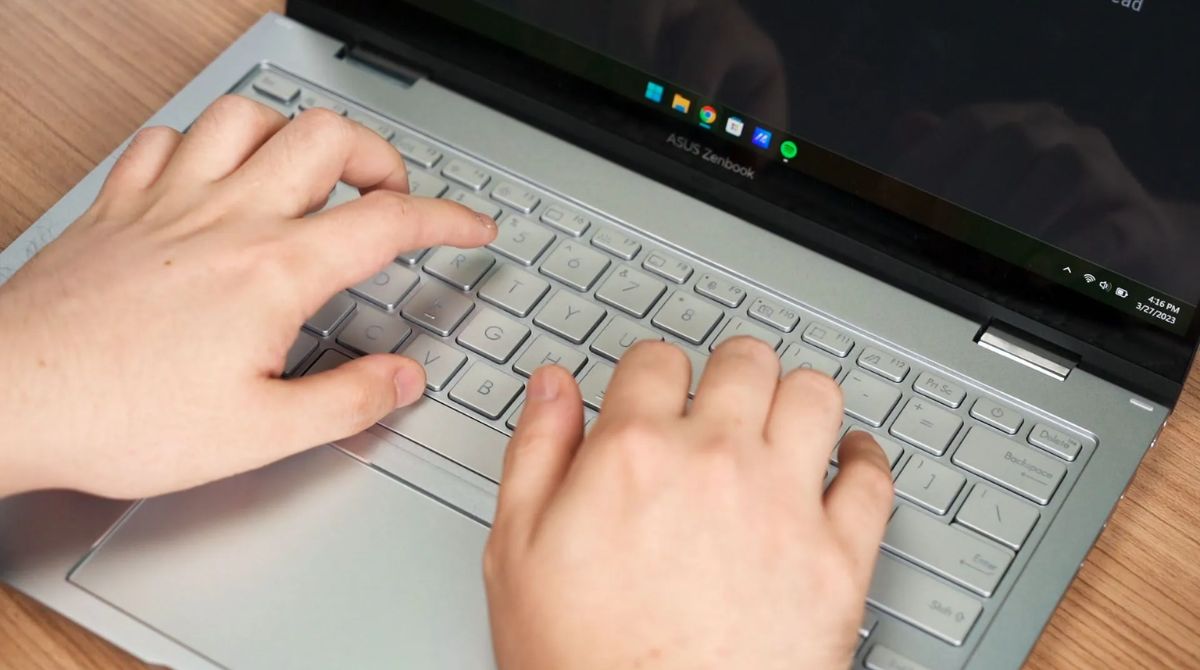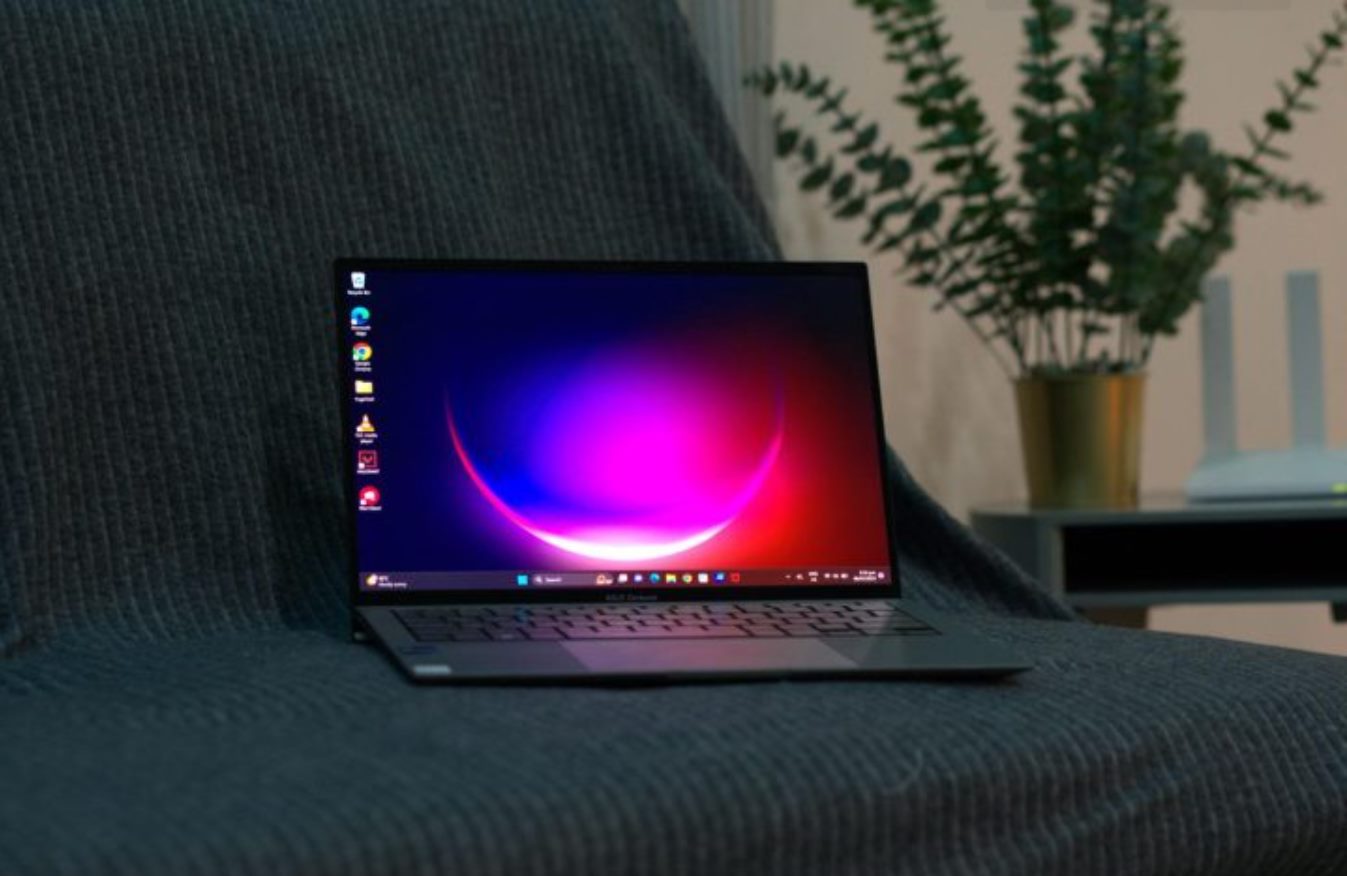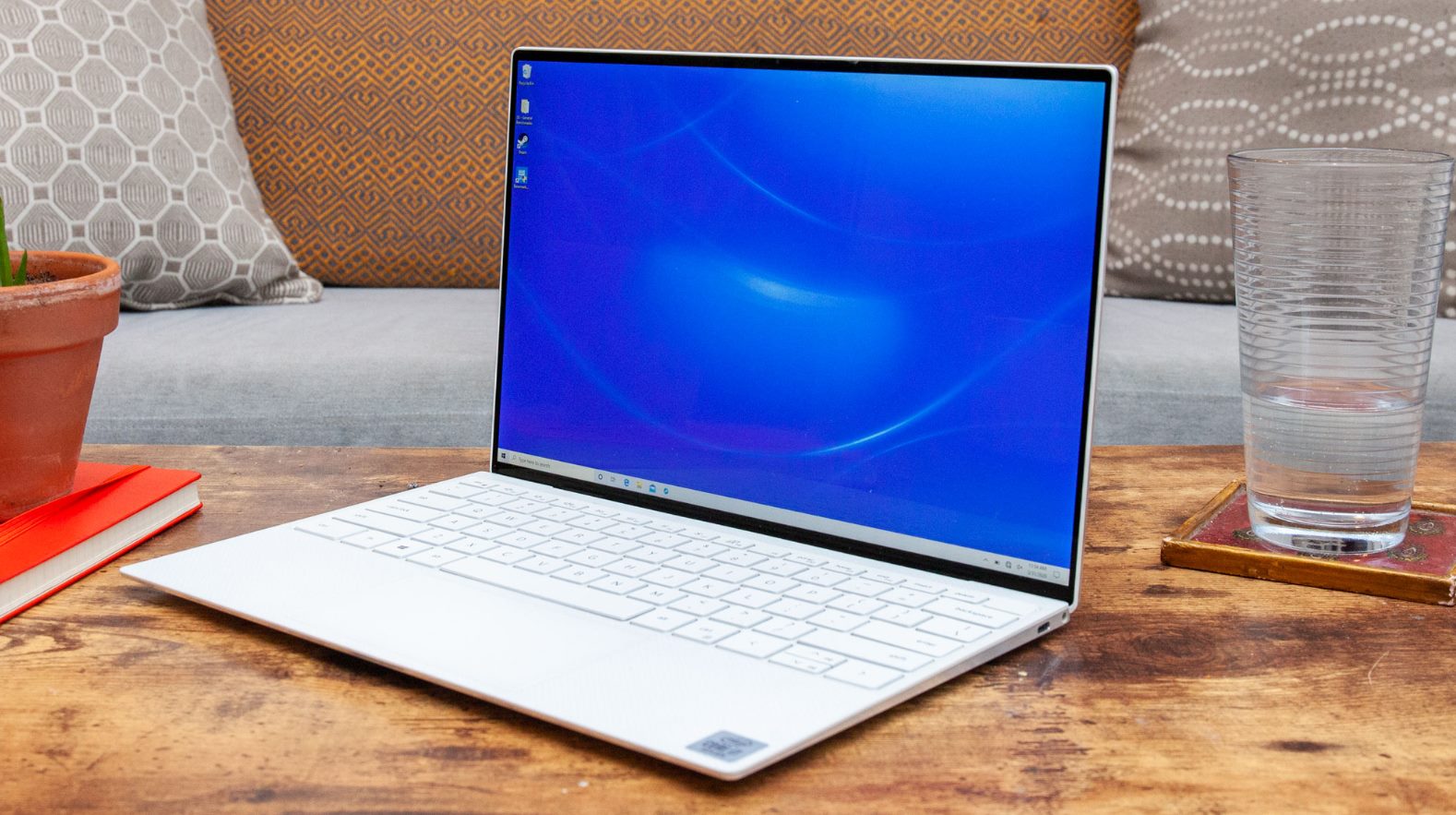Introduction
Welcome to the guide on how to activate the laptop keyboard on an ASUS Ultrabook. If you’re experiencing difficulties with your keyboard not responding or functioning properly, there are a few simple steps you can take to resolve the issue. Whether you accidentally deactivated the keyboard or there is a software malfunction, we will walk you through the process of reactivating it.
Your laptop keyboard is an essential input device that allows you to interact with your computer and perform various functions. Without a functioning keyboard, it can be frustrating and challenging to complete everyday tasks, such as typing emails, browsing the web, or even gaming. Fortunately, there are several troubleshooting methods you can try to get your ASUS Ultrabook keyboard back up and running.
This guide will provide step-by-step instructions to help you reactivate your laptop keyboard effectively. From checking the function keys to updating drivers and adjusting settings, we will cover all the necessary measures to resolve the issue. Additionally, we will address common keyboard activation issues and offer troubleshooting tips to assist you in overcoming any obstacles you may encounter during the process.
Please note that the exact steps and settings may vary slightly depending on the model and operating system of your ASUS Ultrabook. However, the general principles and solutions discussed in this guide should be applicable to most ASUS Ultrabook models.
Now, let’s dive into the step-by-step instructions to activate your laptop keyboard on an ASUS Ultrabook and get you back to smooth and efficient typing!
Step 1: Check the Function keys
The first step in activating the laptop keyboard on your ASUS Ultrabook is to check the function keys. In some cases, the keyboard may have been accidentally deactivated by pressing a combination of keys, usually involving the “Fn” key. Here’s how you can check and reactivate the keyboard using the function keys:
- Look for the “Fn” key on your keyboard. It is usually located in the bottom left corner, next to the “Ctrl” key.
- Press and hold the “Fn” key, then locate the key with an icon resembling a keyboard or the letters “F1-F12” with a small keyboard icon on it. This key may vary depending on your ASUS Ultrabook model.
- While holding the “Fn” key, press the keyboard icon key or the appropriate “F1-F12” key combination.
- Release both keys and check if your keyboard is now activated.
If the function key combination mentioned above doesn’t reactivate the keyboard, proceed to the next steps to explore further solutions. Sometimes, the issue may be related to the BIOS settings or outdated keyboard drivers.
Keep in mind that the keyboard activation process using function keys may differ slightly depending on your ASUS Ultrabook model. Consult the user manual or ASUS support website for specific instructions if necessary.
Step 2: Enable the keyboard through BIOS settings
If checking the function keys did not reactivate your laptop keyboard on the ASUS Ultrabook, the next step is to enable it through the BIOS settings. The BIOS (Basic Input/Output System) is responsible for controlling hardware functions on your computer. Here’s how you can access the BIOS settings and enable the keyboard:
- Restart your ASUS Ultrabook and continuously press the key to enter the BIOS setup. The key to access the BIOS may vary depending on your model but is often the “Delete” or “F2” key.
- Once inside the BIOS setup, navigate to the “Advanced” or “System Configuration” section using the arrow keys on your keyboard.
- Look for an option related to the keyboard or “Internal Pointing Device.” It may be called “Internal Keyboard” or something similar.
- Make sure the option is enabled. If it is already enabled, you can try disabling it, saving the changes, restarting the computer, and then re-enabling it to refresh the settings.
- Save the changes and exit the BIOS setup by selecting the appropriate option.
- Allow your ASUS Ultrabook to boot up, and check if the keyboard is now activated.
If enabling the keyboard through the BIOS settings did not solve the issue, proceed to the next step to update the keyboard drivers. Outdated or corrupt drivers can sometimes cause keyboard malfunctions.
Note: Modifying settings in the BIOS can potentially affect other functionalities of your computer. Ensure that you are familiar with the BIOS setup and make changes cautiously. If you are uncertain, it is advisable to seek professional assistance or contact ASUS support for guidance.
Step 3: Update keyboard drivers
If the previous steps did not resolve the issue, it is worth checking if your keyboard drivers are up to date. Outdated or incompatible drivers can cause keyboard malfunction. Updating the keyboard drivers on your ASUS Ultrabook can potentially fix this problem. Here’s how you can update your keyboard drivers:
- Open the “Device Manager” by right-clicking on the “Start” menu and selecting “Device Manager” from the options.
- In the Device Manager window, look for the “Keyboards” category and expand it by clicking on the arrow icon next to it.
- Right-click on the keyboard device listed and select “Update driver” from the context menu. If you see multiple keyboard devices, update the drivers for each one.
- Choose the option to update the drivers automatically. Windows will search for the latest drivers online and install them if available.
- Follow the on-screen instructions to complete the driver update process.
- Restart your ASUS Ultrabook once the driver update is complete.
After the restart, check if the keyboard is working properly. If not, proceed to the next step to adjust the keyboard settings in the Control Panel.
Updating the keyboard drivers is an effective way to ensure compatibility and resolve any conflicts that may be causing keyboard issues. If the problem persists, further troubleshooting may be required.
Note: If you prefer a manual driver update, you can visit the ASUS support website, enter your model details, and download the latest keyboard drivers specific to your Ultrabook. Follow the installation instructions provided by ASUS during the driver update process.
Step 4: Adjust keyboard settings in Control Panel
If updating the keyboard drivers did not solve the issue, adjusting the keyboard settings in the Control Panel is the next step to consider. The Control Panel allows you to fine-tune various aspects of your keyboard, including its behavior and functionality. Here’s how you can adjust the keyboard settings in the Control Panel:
- Open the Control Panel on your ASUS Ultrabook by searching for “Control Panel” in the search bar or accessing it through the Start menu.
- In the Control Panel window, navigate to the “Hardware and Sound” category and click on “Keyboard.”
- Within the Keyboard settings, make sure the “General” tab is selected, and review the options available.
- Check the settings for the keyboard language, layout, and repeat delay. Ensure that the settings match your preferences.
- Experiment with adjusting the repeat delay and repeat rate sliders to find a comfortable typing experience.
- Switch to the “Hardware” tab and select your keyboard from the list of devices, if available. Click on the “Properties” button.
- In the Keyboard Properties window, navigate to the “Driver” tab and click on the “Update Driver” button. Follow the on-screen instructions to update the keyboard driver if there is an updated version available.
- Click “OK” or “Apply” to save any changes you have made to the keyboard settings.
- Restart your ASUS Ultrabook to apply the new settings.
After the restart, check if the keyboard is functioning correctly. If not, consider using the on-screen keyboard as a temporary solution, as described in the next step.
Adjusting the keyboard settings in the Control Panel provides an opportunity to customize the keyboard according to your preferences. It can help in resolving issues related to keyboard behavior or layout. However, if the problem persists, further troubleshooting may be necessary.
Note: The steps mentioned above are based on Windows operating system. If you are using a different operating system, the steps may slightly vary. Refer to the appropriate documentation or support resources for your operating system for guidance.
Step 5: Use the on-screen keyboard as a temporary solution
If the previous steps did not resolve the issue with your ASUS Ultrabook keyboard, you can use the on-screen keyboard as a temporary solution. The on-screen keyboard allows you to input text using your mouse or touchpad. While it may not provide the same convenience as a physical keyboard, it can help you continue using your laptop until the underlying keyboard issue is resolved. Here’s how you can enable and use the on-screen keyboard:
- Open the Start menu and search for “On-Screen Keyboard” or “Touch Keyboard.”
- Click on the “On-Screen Keyboard” option from the search results to open the on-screen keyboard.
- The on-screen keyboard will appear on your screen. You can use your mouse or touchpad to click on the keys and input text.
- Adjust the position and size of the on-screen keyboard as per your preference by clicking and dragging the edges or corners.
- While using the on-screen keyboard, you may need to disable the physical keyboard to avoid any unintentional input. You can do this by going to the Control Panel and disabling the keyboard device in the Device Manager. Remember to re-enable it once the issue is fixed.
While the on-screen keyboard serves as a temporary solution, it is important to address the underlying issue with your ASUS Ultrabook keyboard. Consider seeking professional assistance or contacting ASUS support for further guidance if the problem persists.
By utilizing the on-screen keyboard, you can continue to use your ASUS Ultrabook for essential tasks until the keyboard is fully functional again.
Note: The on-screen keyboard is a standard feature available in most operating systems, including Windows. The steps to access and use the on-screen keyboard may slightly vary depending on your operating system. Refer to the appropriate documentation or support resources for your operating system if needed.
Troubleshooting common keyboard activation issues
If you have followed the previous steps and are still experiencing issues with activating your ASUS Ultrabook keyboard, there are a few common problems you can troubleshoot to potentially resolve the issue. Here are some troubleshooting tips:
- Restart your computer: Sometimes, a simple restart can help fix minor software glitches that may be affecting your keyboard’s functionality.
- Check for physical damage: Inspect your keyboard for any physical damage such as loose connections, debris, or spills. Clean the keyboard and ensure that all keys are intact and functioning properly.
- Scan for malware: Malware infections can sometimes cause issues with keyboard functionality. Run a thorough antivirus scan to check for any malware or viruses that may be affecting your system.
- Perform a system restore: If you recently made any system changes or installed new software, try performing a system restore to a point before the issue started occurring. This may help revert any changes that could be causing the problem.
- Check for BIOS updates: Visit the ASUS support website and check if there are any BIOS updates available for your specific model. Updating the BIOS to the latest version can sometimes resolve hardware-related issues.
- Try an external keyboard: If available, connect an external keyboard to your ASUS Ultrabook and check if it works properly. This can help determine if the issue is specific to the internal keyboard or a broader system problem.
- Perform a system reset: If all else fails, consider performing a system reset or reinstalling the operating system. This should only be done as a last resort, as it will erase all your data and settings.
If none of the troubleshooting tips mentioned above resolve the issue, it is recommended to contact ASUS support or seek professional assistance to diagnose and fix the problem with your ASUS Ultrabook keyboard.
Remember, troubleshooting steps may vary depending on your specific model and operating system. Refer to the ASUS support resources or consult with a technician for model-specific instructions and guidance.
Conclusion
Activating the laptop keyboard on an ASUS Ultrabook is crucial for efficient and seamless computer usage. We have explored various steps to help you reactivate your keyboard when facing issues. By following the troubleshooting methods outlined in this guide, you can increase the chances of resolving the keyboard activation problem.
We began by checking the function keys to ensure that the keyboard was not accidentally deactivated. If that step didn’t solve the issue, we moved on to enabling the keyboard through BIOS settings. Updating the keyboard drivers and adjusting the keyboard settings in the Control Panel were next on our list. Additionally, we discussed using the on-screen keyboard as a temporary workaround. Finally, we provided troubleshooting tips to address common keyboard activation issues.
Remember, each ASUS Ultrabook model may have slight variations in the steps or settings mentioned in this guide. It is always advisable to consult the user manual specific to your device or refer to the ASUS support website for model-specific instructions.
If you have exhausted all the troubleshooting methods mentioned and are still unable to activate your ASUS Ultrabook keyboard, it is recommended to seek professional assistance or contact ASUS support. They will be able to provide you with further guidance and help resolve the issue.
We hope that this guide has been helpful in helping you activate the keyboard on your ASUS Ultrabook. With a functioning keyboard, you can continue to enjoy a seamless and productive computing experience.

























